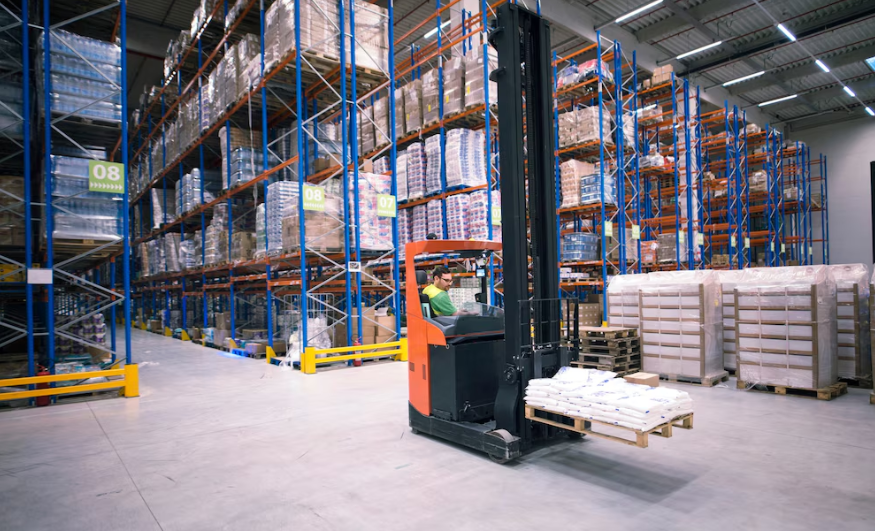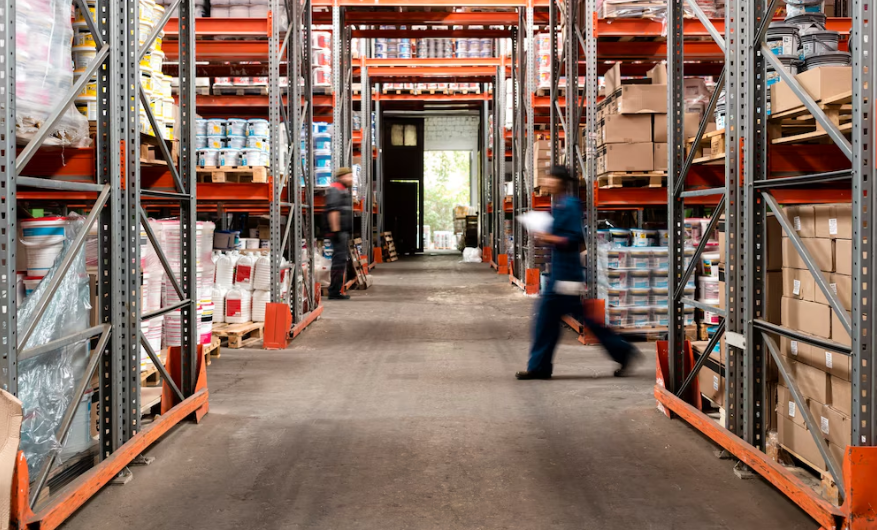Table of Contents
what-is-contract-warehousing
Time: Sep 29,2025 Author: SFC Source: ppcm.com.cn

1. What Is Contract Warehousing
2. Pros and Cons of Contract Warehousing

Pros (Advantages)
Lower Capital and Fixed Investment You avoid the heavy cost of building or leasing your own warehouse, purchasing racking, equipment, and recruiting staff. The 3PL shoulders much of that burden.Operational Efficiency Through Expertise and Scale Specialized warehousing providers have optimized processes, trained staff, and existing infrastructure. They can often operate more efficiently than a small in-house effort.
Customization & Value-Added Services Because you have a dedicated arrangement, the 3PL can tailor layouts, handling flows, labeling, kitting, returns processing, quality control, packaging, or inspection services.
Predictable Costs & Pricing Stability A contract typically defines base rates for storage, handling, labor, and other activities, helping you forecast logistics cost rather than being exposed to volatile spot rates.
Scalability & Capacity Commitment If your business grows or has seasonal demand peaks, the 3PL can commit additional resources (space, labor) in a more planned way than scrambling in public warehouses.
Risk Mitigation & Focus on Core Competencies You shift some operational risk (maintenance, labor fluctuations, facility management) to the provider, so you can focus your management effort on sales, product, and markets.
Improved Service & Reliability Because the provider is committed long term, there is incentive to maintain high service levels, inventory accuracy, and integrate with your supply chain.
Cons (Disadvantages / Challenges)
Long-Term Commitment & Inflexibility Contracts often span multiple years (1–5), which means you may be locked into capacity even if your demand declines.Loss of Control / Reduced Flexibility Outsourcing means relying on another party for critical operations. You may not be able to change processes instantly, and may lose some direct oversight.
Volume Risk / Underutilization If actual demand falls short of forecasts, you might pay for unused capacity or labor—even if you’re not using it fully.
Potential Misalignment of Incentives If contract terms, KPIs, or escalation mechanisms are poorly structured, the 3PL may cut corners or shift costs.
Switching Costs and Exit Risk Transitioning to another provider is not trivial. Knowledge, layout, integration, system alignment, and moving existing inventory involve cost, time, and risk.
Dependence on 3PL’s Financial Stability If your provider is weak or undercapitalized, service quality or continuity might suffer.
3. Who Needs Contract Warehousing

Stable or Predictable Volume Businesses If your SKU mix and demand patterns are relatively stable (or forecastable), you can commit to minimum volumes and benefit from the efficiency of a contract arrangement.
Rapidly Growing or Scaling Enterprises Businesses that anticipate growth may prefer not to invest in more warehouse real estate prematurely. Contract warehousing offers a scalable path.
Complex, Value-Added Handling Requirements If your operations demand customization (e.g. labeling, grading, bundling, longer shelf life, quality checks, returns processing), contract warehousing allows tailored processes more readily than public models.
Companies Seeking to Outsource Noncore Operations If warehousing is not your strategic advantage, outsourcing may free up resources to focus on product, marketing, sales, R&D, or global expansion.
Businesses in Multiple Regions / Cross-Border Logistics For firms importing/exporting, contract warehouses near ports or inland hubs reduce transit times and duty delays.
Industries with Specialty or Regulatory Requirements Products requiring climate control, anti-counterfeit labeling, batch management, certification, or hazardous handling can benefit from a contract warehouse that configures exactly to your compliance standards.
Companies That Already Use Shared 3PL / Public Warehousing and Have Outgrown It If your public warehouse costs are rising, you experience capacity constraints, or demand consistency demands more predictability, moving to a contract warehouse is a logical next step.
Practically speaking, many 3PL providers consider contract warehousing for clients that ship 50,000+ units per year (or another threshold of scale) as a tipping point.
4. Cost Structure of Contract Warehousing

Fixed Costs (Base / Capacity Costs)
Base Storage Rental / Space Charge The client pays for a defined cubic meters, pallet slots, or square meter footprint per month. This ensures you reserve capacity.Labor Minimum / Staffing Charge A baseline labor or staff cost may be embedded in the fixed component, whether or not full usage occurs.
Equipment / Depreciation / Capital Allocation The 3PL may apportion part of its capital investments—forklifts, conveyors, racking—to your operation.
Administration / Overhead Allocation Facility overheads (utilities, management, security, insurance) are often included as fixed cost burdens.
IT / Systems Access Fees If the 3PL uses a warehouse management system (WMS) or provides integration to your ERP, access or license fees may be fixed.
These fixed costs generally ensure your minimum guaranteed access and protect the provider from being overrun by clients shifting loads unpredictably.
Variable / Transactional Costs
Inbound Receiving & Putaway Cost based on volume, weight, cartons, or pallet moves — processing the inbound arrival and placing into storage.Pick & Pack / Order Handling Charges per pick line, per carton, per order, or by complexity (e.g. fragile, multi-piece).
Packaging, Kitting, Labeling Any value-add activities that alter or assemble product before shipment.
Shipping / Outbound Handling / Loading Labor and handling tied to outbound shipments, staging, loading, cross-dock, consolidation.
Cycle Counting / Inventory Audits / QC Periodic audits, counts, damage checks can be separately charged.
Inventory Holding / Management Fees Some contracts impose a “holding or management fee” per unit per month (especially for slow-moving SKUs).
Accessorials & Penalties Extra costs for late pickups, expedited service, off-hour operations, rework, special packaging, safety handling, cross-dock, etc.
Overage / Under-utilization Fees If you exceed your committed volume or fall below a minimum, penalty or overage charges may apply.
Fuel Surcharge / Cost Escalation Clauses Some contracts tie variable costs to external indices (fuel, labor, inflation) and allow escalations.
Key Cost Drivers & Sensitivities to Watch
5. Contract vs Public vs Private Warehousing
| Feature / Consideration | Public Warehousing | Contract Warehousing | Private Warehousing |
| Definition / Model | Shared facility with flexible short-term usage, pay-as-you-go | Dedicated capacity under long-term agreement | Owned or leased by the client and operated by client or hired staff |
| Investment / Capital Outlay | Minimal (you only pay when using) | Low on your side (3PL invests) | High (real estate, equipment, staffing) |
| Flexibility | Very flexible — rent more or less by month | Moderate: committed but adjustable within contract | Rigid — must manage excess or shortage |
| Customization / Control | Low — standardized processes | Medium to high — processes can be tailored | Highest — full control |
| Cost Predictability | Medium to low — variable costs fluctuate | High — fixed + variable + negotiated | Medium to high — fixed overhead heavy |
| Risk / Underutilization | Low — you bear usage risk | Medium — you might pay for unused capacity if demand drops | High — you bear full cost of unused capacity |
| Switching / Exit | Easy — move between providers | Moderate — relocation and contract exit costs | Hard — real estate and asset sunk costs |
| Best For | Small/seasonal, unpredictable volume, short-term projects | Mid/large firms with consistent volume and specialized needs | Very large firms with stable, high volume and strategic control needs |
Public warehousing is ideal for businesses with irregular demand, short-term needs, or experimentation. It allows you to pay only for what you use, but gives little customization or long-term stability.
6. How to Choose a Good Contract Warehousing Provider

Define Your Requirements Clearly Up Front
Evaluate Candidate Providers on These Criteria
A. Experience and Track Record
B. Infrastructure & Capability
C. Systems & Technology
D. Service, SLAs & KPIs
E. Cost Transparency & Pricing Structure
F. Location & Transportation Network
G. Security, Compliance, Safety
H. Cultural Fit & Communication
Negotiate a Balanced Contract
Pilot or Phased Implementation
Governance & Continuous Review
7. Conclusion
8. FAQs
1. What is the minimum volume to justify contract warehousing?
There’s no strict rule, but many 3PLs consider businesses handling tens of thousands of units annually (or consistent pallet volumes) as a threshold. It depends on your cost profile and pricing.2. Can I exit a contract early?
Yes—but you'll often face penalties or termination costs unless the contract specifically allows for early exit triggers.3. How do providers charge for slow-moving SKUs?
Often via an inventory holding or management fee, or by reclassifying to a higher cost bracket for slow movers.4. What happens during volume spikes (e.g., seasonality)?
Good contracts include buffer capacity or flex clauses to scale up, and also address surcharges or overtime labor.5. Can I switch providers after 2 years?
Yes, if the contract’s exit/transition clauses are well structured. The challenge is in moving inventory, systems, and operations smoothly. Post Views:409
Post Views:409
Copyright statement: The copyright of this article belongs to the original author. Please indicate the source for reprinting.
Previous Post
What Is Stock Control & Why It’s Crucial for Ecommerce Success
Next Post
Speed Up Your Fulfillment: Strategies to Improve Order Cycle Time
TAGS
Hot Research
Get a Custom China Fulfillment Solution with FREE Storage for 30 Days
 Want to know about our services, fees or receive a custom quote?
Want to know about our services, fees or receive a custom quote?
 Please fill out the form on the right and we will get back to you within a business day.
Please fill out the form on the right and we will get back to you within a business day.
 The more information you provide, the better our initial response
will be.
The more information you provide, the better our initial response
will be.





 TAGS:
TAGS: